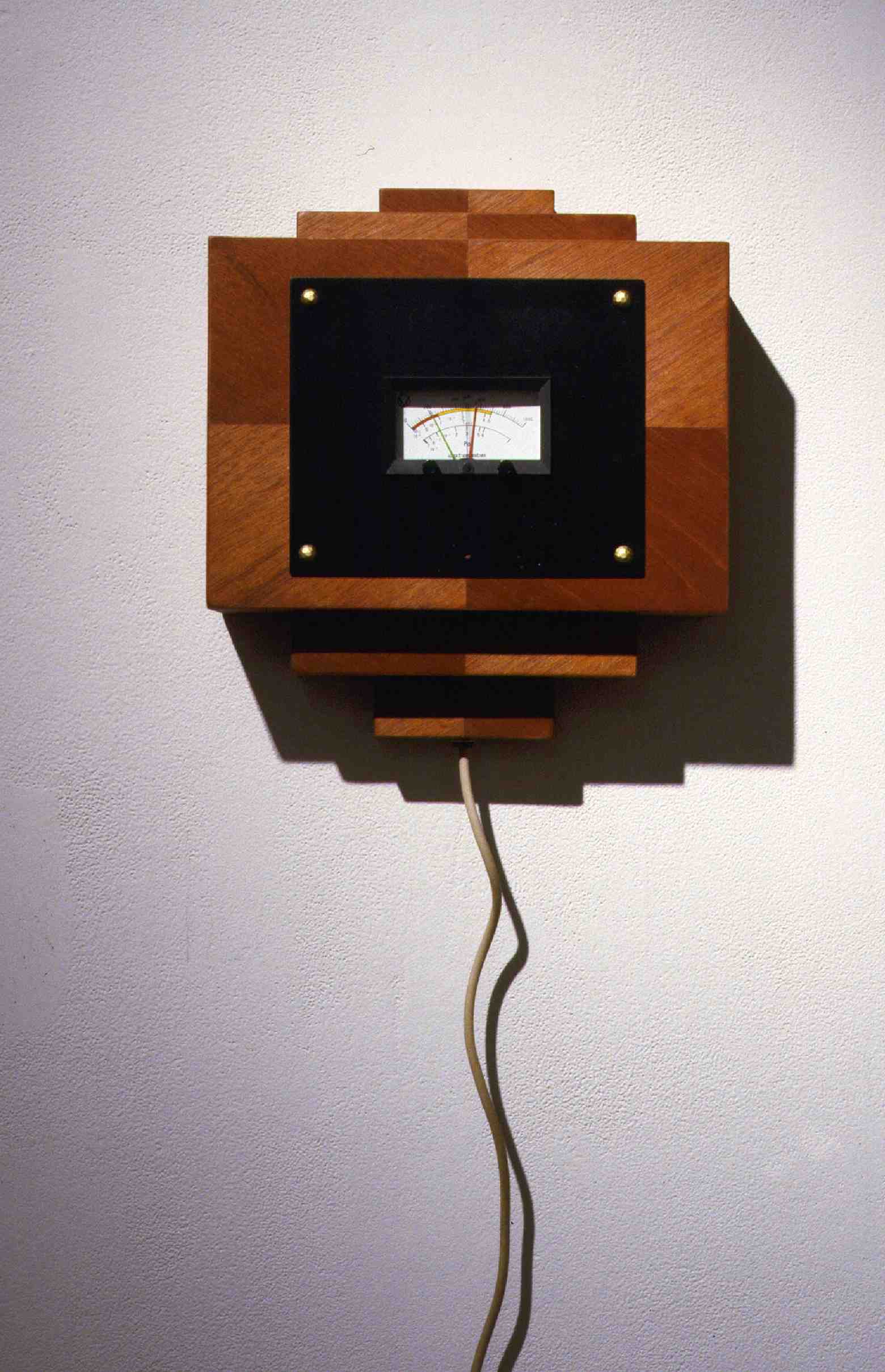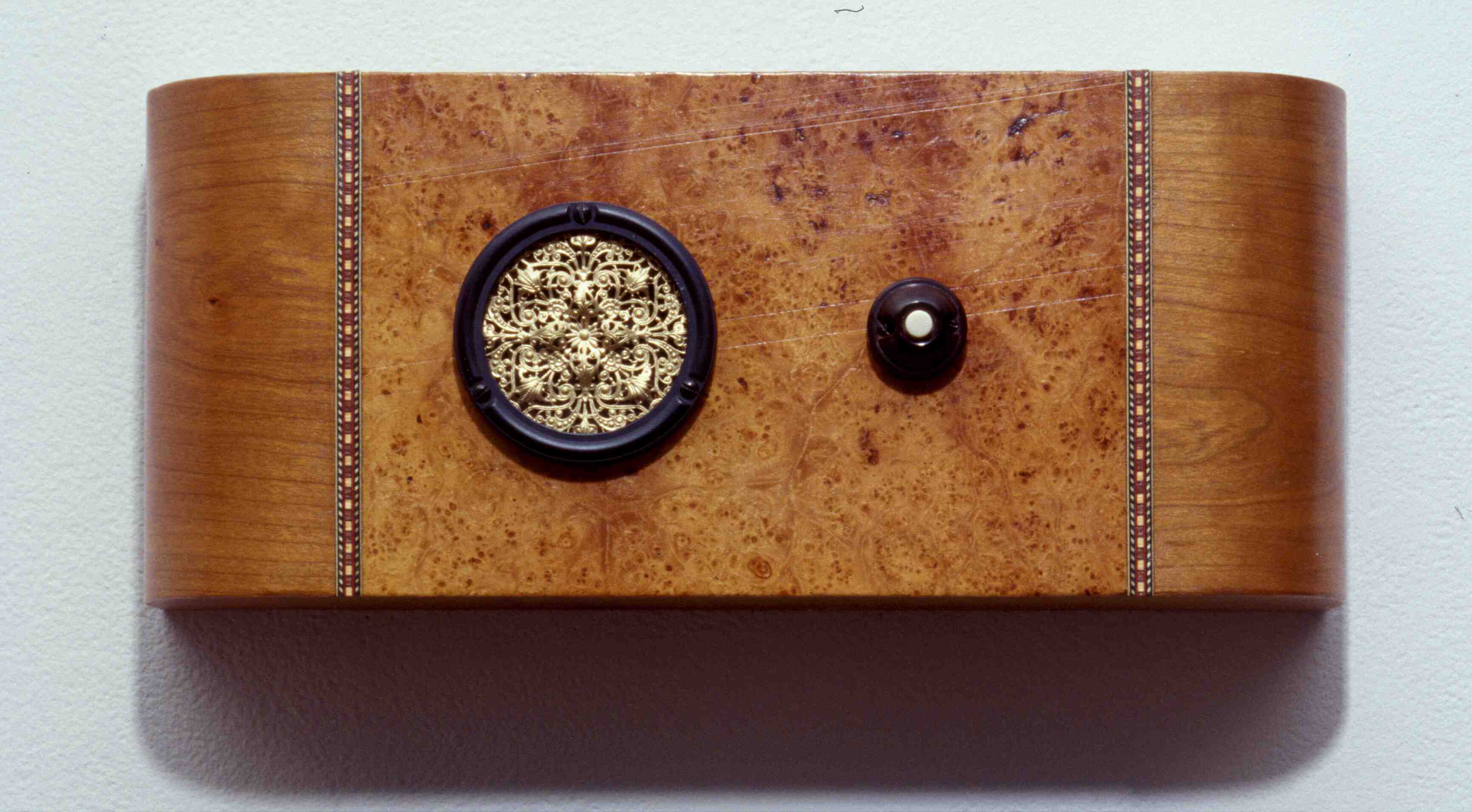A fundamental objective of
mine has been to explore the use of electrical technology as an aesthetic
medium. As an adjunct to this, I became interested in the expressive potential
of a common icon of modern technology, the meter. In this ongoing series
of “meterboxes” I design circuitry to generate particular
meter motions, each appropriate to the theme of an individual piece.
In this series, the behavior
of the electronics was initially intended to be narrative, and the meter
a revelatory window into the analogy between theme and device. Interestingly
however, when the boxes were placed in a gallery, I often found that people
expected the meters to be literally measuring some physical quantity.
To me the pieces were very didactic, very traditional. There were no sensors
involved. They hung on the wall and expounded, oblivious to their surroundings.
It became clear that the meter
was a much more abstract object to me than to most viewers. I see it as
a one dimensional information channel and I’m interested in the
expressive potential of this limited, ostensibly sterile, mechanism. My
point was that they could tell you something more than voltage and yet
people kept asking “what are the meters measuring?” I saw
people dancing in front of and yelling at the art to see if it knew they
were there! Which is interesting because no one expects a painting to
react to them. I rarely even see people fanning or blowing on Calder’s
mobiles, but people expect electrical technology to be “interactive”,
which makes me think that on some level, we consider electrical devices
to be more a part of us than most objects.
In light of the above, I’ve
begun modifying my approach to position the meter as a more abstract symbol.
I’ve started removing the scales on the meters and sometimes adding
text. To satisfy the desire to interact, I’ve added controls to
let the viewers modify the behavior. The meter is a powerful icon. It
is trying to tell us something, people are drawn to it just as to a face,
and there is something primal about a message reduced and abstracted to
the motion of a single line.






